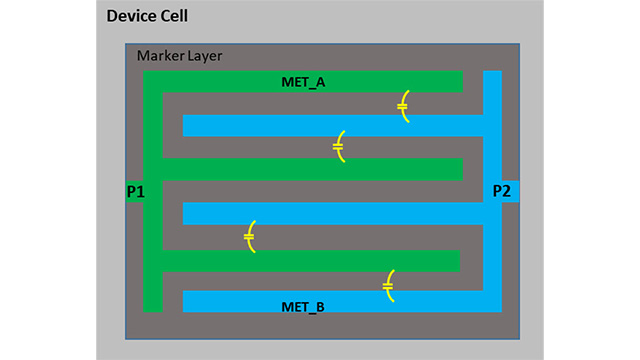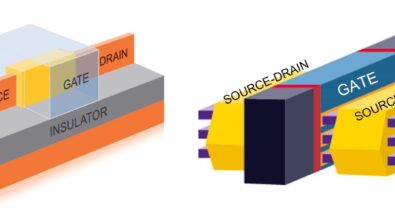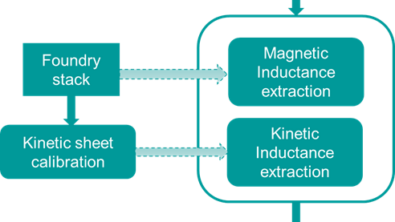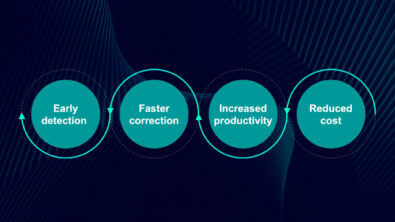Extracting parasitics from MIM/MOM capacitors doesn’t have to hurt!

By Claudia Relyea and Sandeep Koranne
Analog/RF designers need both the speed of rule-based PEX, as well as the capacity and performance of a field solver to accurately extract MIM/MOM capacitors. The Calibre xACT platform provides both.
Metal-insulator-metal (MIM) and metal-oxide-metal (MOM) capacitors are an integral part of most analog/RF designs. MIM capacitors are typically used in RF circuits for oscillators, phase-shift networks, coupling, and bypass capacitance, but they’re also useful in analog designs because of their highly linear nature and dynamic range. Special processes and additional masks are needed to create a MIM capacitor. MOM capacitors, on the other hand, are constructed of multiple inter-digitated fingers formed with metal interconnect layers, so they don’t require additional masks. Using multiple metal layers in the construction allows the capacitance density for the capacitor to be increased, exceeding that of a MIM capacitor. A vertical natural capacitor (VNCAP), also known as a vertical parallel plate (VPP), is a type of MOM capacitor made up of inter-digitated fingers on multiple stacked metal layers, connected by vias, which further increases the capacitance per unit area.
No matter which type of capacitor your designs use, every circuit verification engineer knows analog/RF designs typically require very high accuracy and fine control of capacitor values. Precise design constraints for characteristics like symmetry, capacitance density, and frequency translate into strict parasitic extraction (PEX) requirements that can make extraction difficult and time-consuming. Flat extraction of designs down to the device level, including device geometries, requires faster performance and higher capacity than a full wave field solver can provide, but higher accuracy than rule based PEX tools are designed for. In addition, because non-local effects such as density, loading, thickness, and double patterning (DP) coloring mask shifts play a very large role in capacitance accuracy at advanced nodes, context-aware PEX is also necessary to ensure maximum accuracy. In other words, because the parasitic coupling effects of the routing adjacent to, above and below the device affect the device characteristics, the PEX process must recognize and take these effects into account.
The Calibre® xACT™ platform, with integrated Calibre xACT 3D and Calibre xL functionality, provides designers with a fast, highly accurate, and multi-purpose PEX tool that enables post-layout simulation across a wide range of designs and advanced process nodes. The Calibre xACT platform combines the accuracy of a 3D field solver engine, the fast performance of a rule-based extraction engine, and innovative context-aware functionality to precisely extract all parasitic capacitance components in an analog/RF design and generate a distributed RC netlist of the design that can be used in a downstream post-layout simulation flow.
Understanding best practices (including the recommended PEX process) for extracting the complex geometries of MIM/MOM capacitor devices, as well as the in-context coupling effects for those devices in sensitive analog/RF blocks, enables designers to accurately apply the appropriate extraction process to different parts of their design. The flexibility of the Calibre xACT platform, combined with attofarad accuracy, high performance, and advanced device modeling, provides analog/RF designers the speed and functionality they need to meet both their delivery schedules and performance specifications.
For a detailed explanation of MIM/MOM parasitic extraction requirements and processes, and to learn how you can start improving extraction speed and accuracy in your designs, download a copy of our technical paper, Parasitic extraction of MIM/MOM capacitor devices in analog/RF designs


